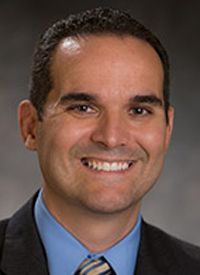Debate Continues Over Full-Body Skin Exams for Those at High Risk of Skin Cancer
The US Preventive Services Task Force (USPSTF) does not agree with the need for yearly full-body skin exams, which many healthcare providers support.
Philip Scumpia, MD

Philip Scumpia, MD
Whether full-body skin exams should be done each year to facilitate earlier detection of both nonmelanoma and melanoma skin cancers, remains a topic of debate, with many in healthcare calling for set guidelines for people who may be at high risk of developing the disease. The US Preventive Services Task Force (USPSTF) is not yet on board with this, and that currently, there is “insufficient evidence” to recommend them.
“We’re lagging behind other countries,” Philip Scumpia, MD, dermatologist and dermatopathologist at UCLA Health and UCLA Jonsson Comprehensive Cancer Center, said in a recent interview. “Different countries—Australia, The Netherlands, Germany, New Zealand, even the United Kingdom—all have screening guidelines for different subsets of patients. It’s not acceptable if we think we have one of the best healthcare systems in the world.”
A group of dermatologists and oncologists published an article in Future Medicine asking the USPSTF to revise its stance on full-body skin inspections. The authors stated that they disagreed with the task force’s findings and that routine body screening of high-risk individuals could help reduce skin cancer deaths.
Skin cancer is the most common of all cancers. Although melanoma accounts for only about 1% percent of skin cancers, the American Cancer Society estimates that 9730 people will die of the disease this year alone.
High-risk populations include people who have a family or personal history of a gene mutation that makes them more predisposed to skin cancer, especially melanoma; any patient who has had a skin cancer; people who are fair skinned and have blonde or red hair; people who have a significant sun-exposure history; and anyone who is immunocompromised.
“What I am seeing is younger and younger people, despite wearing sunscreen and trying to be more protective, are still developing skin cancer,” Scumpia said. “If we wait until these people are 50 years old, they are going to have large tumors that can cause disfiguration.”
Scumpia added, “Melanoma is one of these cancers that can kill younger people. It starts to get a higher incidence in your 30s, 40s and 50s and the death rate is one of the highest at those age groups, as well.”
Although annual physical exams with a primary care physician are important for other health-related matters, Scumpia said that these professionals are not trained to look for suspicious moles and other common signs of skin cancer.
Some of the symptoms include new or unusual growth on the body or a change in an existing mole.
“A lot of times we have a person who says, ‘Oh, I just have this pink spot or this red spot, and usually my pink/red spots go away, but this one has stayed there for 3 to 4 months.’ That’s definitely something you should biopsy,” said Scumpia. “Anything that bleeds without you scratching it, anything that is dark and growing, anything that stands out. We call it the ‘ugly duckling’ sign.”
The recommended age for skin cancer screening varies among the professional societies, but, noted Scumpia, “Let’s say you’re a 17-year-old kid who plays baseball in the fall and spring, you play soccer in the summer, you’re outside all day, you have a family history and you have moles—you should get them checked.”
In addition, Scumpia recommends using sunblock that is SPF 30 or higher that contains zinc and titanium because these will last longer than spray-on sunscreen.
Scumpia’s message for the USPSTF: “We need some sort of screening guidelines for at-risk patients. Once we get guidelines for these people, then we can extend it to the general population.”
___________________________________________________________________________
Johnson MM, Leachman SA, Aspinwall LG, et al. Skin cancer screening: recommendations for data-driven screening guidelines and a review of the US Preventive Services Task Force controversy. Future Medicine. 2017;4(1):13-37. doi: 10.2217/mmt-2016-0022.



